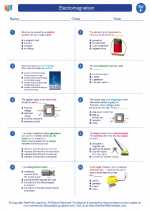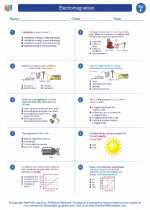Climate
Climate refers to the long-term patterns and averages of temperature, precipitation, humidity, wind, and other atmospheric conditions in a particular region. It is different from weather, which refers to the short-term changes in the atmosphere, such as temperature changes, precipitation, and wind patterns on a daily or weekly basis.
Factors Affecting Climate
Several factors influence the climate of a region:
- Latitude: The closer a place is to the equator, the warmer its climate tends to be, while places closer to the poles generally have cooler climates.
- Altitude: Higher altitudes usually have cooler temperatures due to the decrease in air pressure and the thinner atmosphere.
- Distance from the sea: Coastal areas tend to have milder climates due to the moderating influence of the ocean, while inland areas experience greater temperature variations.
- Ocean currents: Warm ocean currents can warm the climate of coastal regions, while cold ocean currents can cool the climate.
- Wind patterns: Prevailing wind patterns can influence the climate of a region, bringing moisture or dry air depending on the direction and origin of the winds.
- Topography: The physical features of the land, such as mountains and valleys, can affect local climate by creating rain shadows or trapping air masses.
Climate Classification
The Köppen climate classification system is widely used to classify different climate types based on temperature and precipitation patterns. The main climate types under this system include Tropical, Dry, Temperate, Continental, and Polar climates, each with its own subcategories based on specific temperature and precipitation criteria.
Impact of Climate Change
Climate change refers to long-term shifts in temperature, precipitation, and other atmospheric conditions, often attributed to human activities such as the burning of fossil fuels and deforestation. It can lead to rising sea levels, altered weather patterns, and changes in ecosystems, with potential impacts on agriculture, water resources, and human health.
Study Guide
Here are some key points to remember when studying the topic of climate:
- Understand the difference between climate and weather.
- Identify the factors that influence climate, such as latitude, altitude, distance from the sea, ocean currents, wind patterns, and topography.
- Learn about the Köppen climate classification system and the main climate types it encompasses.
- Explore the potential impacts of climate change on the environment and human societies.
- Consider current efforts and solutions to mitigate the effects of climate change.
By understanding the complexities of climate and its global significance, we can better appreciate the interconnectedness of Earth's systems and work towards sustainable practices for the future.
[Climate] Related Worksheets and Study Guides:
.◂Science Worksheets and Study Guides Sixth Grade. Electromagnetism

 Activity Lesson
Activity Lesson
 Worksheet/Answer key
Worksheet/Answer key
 Worksheet/Answer key
Worksheet/Answer key
 Worksheet/Answer key
Worksheet/Answer key
 Vocabulary/Answer key
Vocabulary/Answer key
 Vocabulary/Answer key
Vocabulary/Answer key
